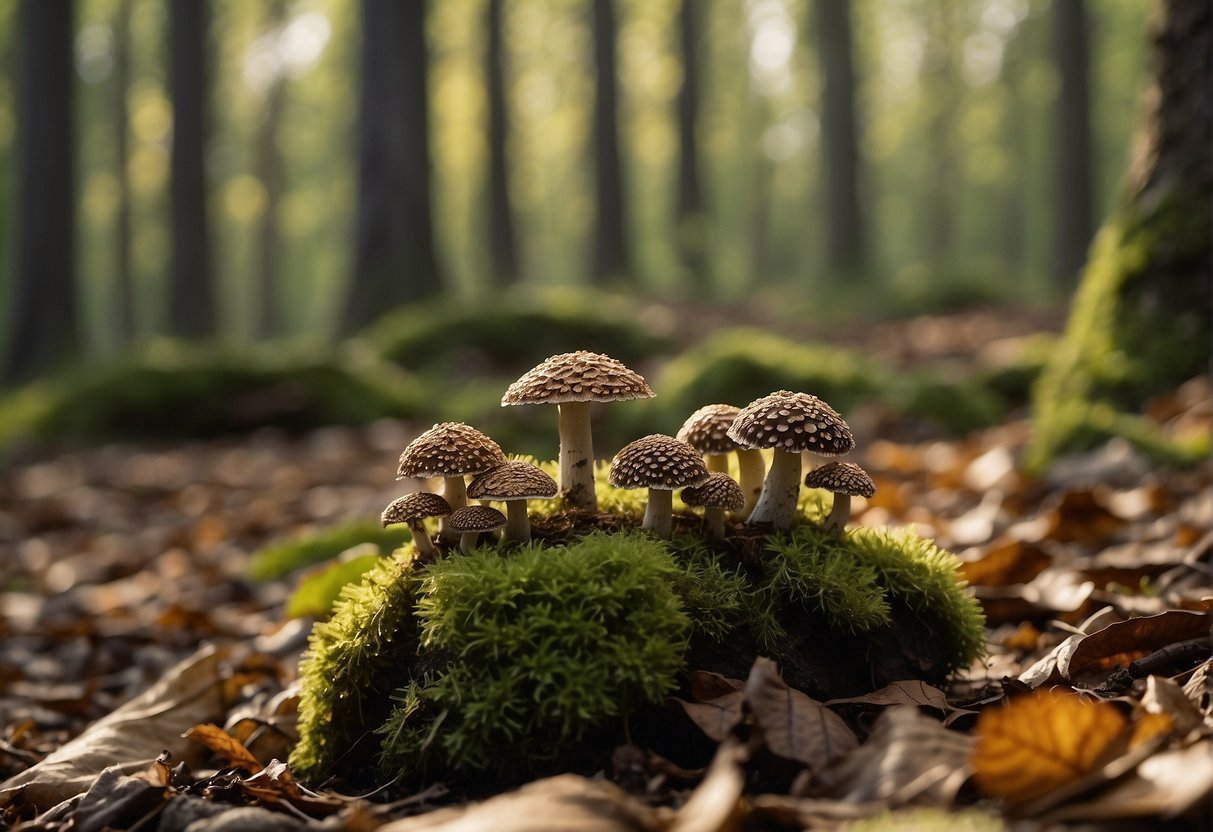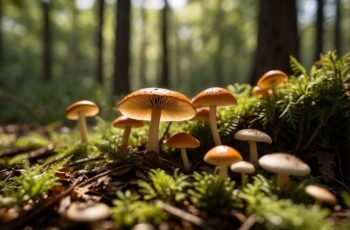Morels are a unique and highly sought-after variety of mushroom that can ignite the passion of outdoors enthusiasts and gourmets alike. With their distinctive honeycomb appearance and rich, earthy flavor, morels offer a rewarding challenge for those looking to cultivate or forage them. Unlike other mushrooms, morels require specific conditions to thrive, often found in woodland areas that have been recently disturbed, such as those affected by forest fires or logging.
If you’re considering growing morels yourself, patience and understanding of their life cycle are crucial. These mushrooms are part of the Morchella genus, and they have a symbiotic relationship with trees, making their successful cultivation a delicate balance of nature and nurture. Whether you’re a beginner to mushroom growing or an experienced forager, learning to grow morels at home can be a deeply satisfying endeavor, allowing you to harvest your own forest delicacies right from your backyard or local woodland area.
While foraging morels can be an exciting excuse to explore the great outdoors, it requires a keen eye and knowledge of their preferred habitats. Typically found in temperate regions across North America, morels have a penchant for hardwood forests, especially amidst trees such as oak, elm, and ash. Their season is brief, usually spanning from late winter through mid-spring, which adds a sense of urgency and adventure to your search. With the right knowledge and a little luck, you can discover these hidden treasures of the forest floor and enjoy the unmatched satisfaction that comes with finding and savoring your own morel mushrooms.
The Biology of Morels
Morel mushrooms are a prized find for outdoor enthusiasts due to their unique flavor and elusive nature. Get ready to uncover the intricacies of these fascinating fungi and learn to distinguish the edible delights from their potentially toxic lookalikes.
Understanding Morel Lifecycle
Morel mushrooms, like all fungi, begin their life as spores. These microscopic particles are produced by mature morels and released into the environment, where they land on suitable substrates and germinate into mycelium. This mycelial network is the vegetative part of the fungus, and it plays a crucial role in acquiring nutrients from the soil. In the case of morels, when conditions are just right — typically in spring when the soil warms to around 45°F – 50°F (7°C – 10°C) — the mycelium produces the fruiting bodies you know as morel mushrooms.
Creating a spore slurry is one way to introduce these spores into your own backyard or forested area. This concoction usually consists of morel spores mixed with water, a sugar source like molasses, and a small amount of salt to mimic the growth conditions in the wild.
Identifying True and False Morels
To ensure a safe foraging experience, you need to be able to distinguish between true morels and false morels. True morels have a honeycomb appearance with ridges and pits, and their caps are attached directly to the stem. When cut in half, they are entirely hollow from the tip of the cap to the bottom of the stem. On the other hand, false morels, which may be harmful to eat, often have a wrinkled or brain-like cap and a cottony or chunky interior when sliced open.
Remember, never consume a mushroom unless you’re 100% certain of its identity. If in doubt, consult an expert or a reliable field guide before tasting your find. Your safety while enjoying the bounty of the woods is paramount.
Cultivating Morel Mushrooms
Cultivation of morel mushrooms is both an art and a science, requiring attention to detail and understanding of their unique growing conditions. You’re about to embark on a journey that combines traditional growing methods with careful environmental control.
Choosing a Suitable Substrate
To grow morels, the choice of substrate is crucial. Morels prefer a substrate that closely mimics their natural habitat — rich, loamy soil — which provides the necessary nutrients and moisture retention. A mixture of peat moss, gypsum, and wood ash can create an ideal base. To prepare your substrate, you should aim for a balanced blend, starting with:
- 2 parts loamy soil
- 1 part peat moss
- A sprinkling of gypsum and wood ash
This mixture will help maintain the right moisture and nutrient levels necessary for the morels to thrive.
Maintaining Optimum Growing Conditions
Morels need specific temperature and light conditions for optimal growth, indicative of spring weather patterns. Your goal is to maintain:
- Soil temperature: Around 45°F (7°C) to initiate growth, not exceeding 60°F (15°C)
- Air temperature: Ideally fluctuating between 50°F and 70°F (10°C and 21°C)
- Light exposure: Indirect light, as direct sunlight can dry out the substrate
To keep these conditions stable, frequently monitor the environment and make adjustments when necessary. A consistent regime will support the development of healthy morel spores.
Protecting Morel Cultures From Contaminants
A significant hurdle in morel mushroom cultivation is avoiding contamination. Bacterial and fungal contaminants can quickly overrun your culture, so it’s vital to:
- Sterilize all equipment and the area where you plan to grow morels
- Isolate the growing area to prevent cross-contamination from other plants or soil
- Monitor for signs of contamination and remove any affected parts immediately
By maintaining cleanliness and vigilance, you can protect your morel cultures and ensure a bountiful harvest. Remember, successful cultivation depends on your ability to replicate and protect the morel mushroom’s natural growing conditions.
Harvesting and Preservation
When harvesting and preserving morels, your aim should be to maintain their unique flavor and firm texture. Here’s how you can ensure your morels stay fresh from forest to kitchen.
Best Practices for Harvesting Morels
To harvest morels without harming the environment:
- Identify the Habitat: Morels flourish in orchards and woods, particularly around hardwood chips or trees like elm and oak.
- Timing is Key: Harvest when morels are solid and plump.
- Cut, Don’t Pull: Use a knife or scissors to cut the stem above the soil, which preserves the mycelium.
- Equipment: Bring a mesh bag; this helps in spore dispersal for future growth.
Storing and Preserving Your Morel Harvest
For preserving your freshly picked morels:
- Quick Use: Store fresh morels in a paper bag in the fridge for up to a week.
- Long-Term Storage:
- Drying: Lay them out on a screen or hang in a dry, ventilated area. Store dried morels in an airtight container.
- Freezing: Blanch morels in boiling water, cool immediately, and freeze in a single layer before transferring to a container.
- Maintaining Quality: The texture of morels is best preserved when dried or frozen quickly after harvesting. Avoid soaking in water as it can diminish their distinct fruity notes.
By following these methods, you’ll ensure your morel mushrooms retain their sought-after taste and texture, ready to be enjoyed long after the season has ended.
Morel Foraging Tips
Embarking on a morel foraging adventure is both rewarding and engaging, but it demands a respectful approach to nature and a keen adherence to safety practices to ensure a positive experience.

Foraging Ethics and Permission
- Ask for Permission: Before you start foraging in a forest, ensure you have the proper permission from the landowner or authority managing the public land. This shows respect for private properties and protected natural habitats.
- Sustainable Practices: Practice sustainability by being mindful not to overharvest. Leave enough morels behind to permit regeneration, and be careful not to disturb the surrounding flora.
Safety Tips for Morel Foraging
- Experienced Guide: Especially if you’re new to foraging, consider taking an experienced guide with you. They can help you correctly identify morels and steer clear of toxic look-alikes.
- Prepare Appropriately: Equip yourself with a map, compass, or GPS—forests can be disorienting. Dress in layers, wear sturdy shoes, and carry water and a snack. Remember to let someone know where you’re going and when to expect you back.


